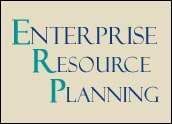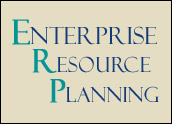
A mature market that has served as the backbone for enterprise computing for many decades, the ERP industry is not characterized by rapid change. So, when a “game changer” appears — that’s how Frost & Sullivan analyst David Boulanger characterized SAP’s ongoing Business ByDesign rollout — it pays to sit up and take notice.
SAP intended to introduce the application two years ago, but there were delays, reportedly with its architecture design. Now, the product is being quietly rolled out on a limited basis, Boulanger told CRM Buyer, and the search is on for early adopters.
The newest release of SAP Business ByDesign FP2.0 is available for productive use in Germany, the U.S., the UK, France, China and India.
“SAP expects to expand market and country coverage in 2010 and beyond,” SAP spokesperson Shabana Khan told CRM Buyer. The solution is currently available through the charter client program.
So what is this “game changing” application? It’s a mid-market product that is designed and delivered on the Software as a Service model.
For anyone who has taken the software industry’s hype seriously over the years, the fact that one of the first major ERP applications to be delivered via SaaS is only hitting the market now might come as a shock.
However, the ERP industry is not, never has been and never will be a fast-moving business, Gartner analyst Christian Hestermann told CRM Buyer.
Vendors have been talking about on demand for years, he said, “but the software underneath was always the same.”
The good news is that there are signs that change in ERP may occur faster going forward — a reaction to a vicious economy and new attitudes among buying companies.
BYD Giving Off Sparks
“BYD,” as SAP’s ByDesign application is known, will catch on quickly — and prompt other vendors to ratchet up realistic plans to deploy similarly robust SaaS ERP products, predicted Boulanger.
“What companies want is to implement ERP in weeks or months instead of the years that they are accustomed to,” he said.
There is a huge underserved and uptapped market for SaaS ERP — much broader than many people realize, said Steve Niesman, president and CEO of Itelligence.
“I think it is a market that is about to explode,” he told CRM Buyer.
There are other providers in this space, Niesman acknowledged — notably NetSuite, which for years has been successfully growing market share for its accounting-CRM-order management SaaS offering, and Salesforce.com, which has morphed from a CRM application to an offering far more robust.
“But in terms of a complete, fully integrated, rich system that provides industry-specific content,” Niesman said, “SAP will be the first major provider to offer a SaaS application.”
The State of the Economy
The timing is perfect for BYD’s debute, according to Niesman. The recession is still painful, but there are clear signs that it is receding.
“People can see the bottom of the economy — they’ve already adjusted their business model for the worst-case scenario and are now ready to make some new investments in IT,” Niesman said.
For example, compared to last year, there has been a greater propensity this year for businesses to leverage their ERP investments with mobile applications, Dan Shey, practice director of mobile services at ABI Research, told CRM Buyer.
The economy has been the main driver, he said. “When you mobilize a field force and have productivity gains that can reach 70 to 90 percent, these investments are a no-brainer.”
In 2008, the mobile enterprise business market share was .18 percent, noted Shey, citing ongoing ABI research. This year, that number is .28 percent so far.
“I can tell you that in Q1 and Q2 especially, I have had a number of conversations with mobile line-of- business application vendors that have said the economy was bad, but their business was doing fantastic,” said Shey.
As companies invest more in ERP, they are not necessarily staying with their established providers, Crispin Read, general manager of Microsoft Dynamics, told CRM Buyer.
That trend has become apparent in the past three months, he observed.
“I have noticed a significant uptake among companies in two-tier ERP deployment models,” noted Read.
That is, companies will deploy additional ERP modules to subsidiaries or new branches that are not, say, the Oracle or SAP they have at headquarters, but a more nimble application.
Dynamics has been the beneficiary of that trend, Read said — including internally at Microsoft. The company uses SAP financials, but has deployed Dynamics in several new divisions lately.
Changing User Profile
The economy is also prompting companies to make greater use of the ERP technology they do have in place, according to Cindy Jutras, vice president of research development at Aberdeen
That’s a trend she has been watching this year, but that has become particularly manifest in the last three months.
For the past four years, only 25 percent of the deployed system gets used, Jutras pointed out, citing past studies she conducted measuring the average use of ERP systems at companies.
As this year’s measurements are shaping up, she is detecting a greater use of the system. That is likely due to a number of factors — including companies taking a much harder look at ROI and seeking functionality gains by deploying new modules or complementary applications that ERP vendors routinely release.
The end goal is still corporate savings, even though companies are investing in additional modules to gain greater use of their ERP systems, said Jutras. “People are not deterred by price if it brings them greater functionality.”






















































